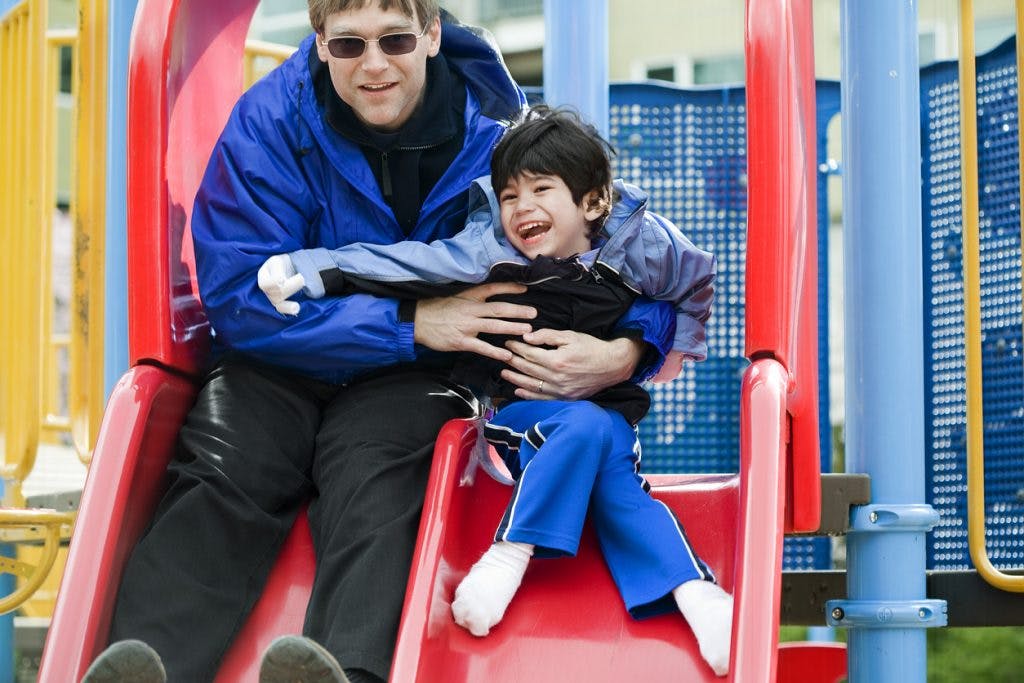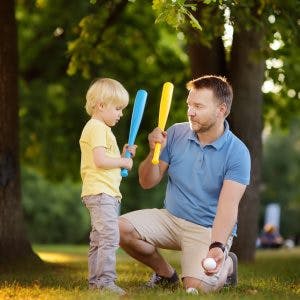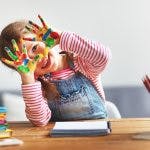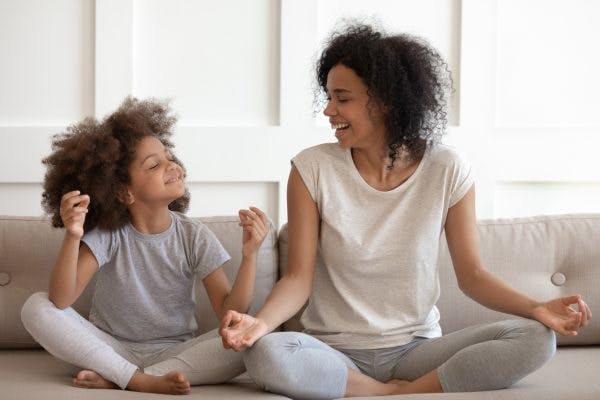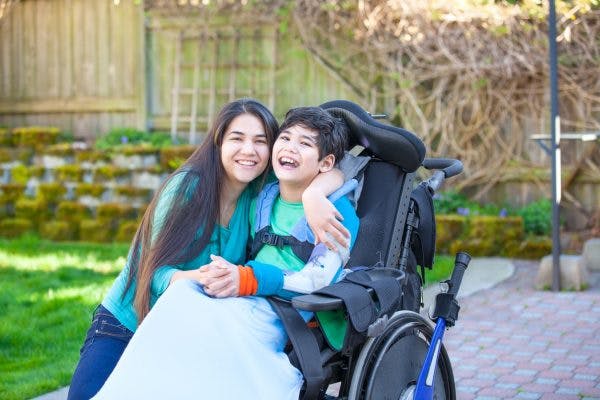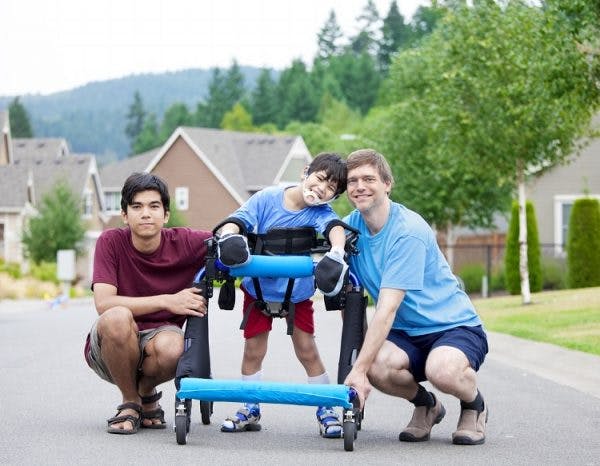The best activities for kids with cerebral palsy will encourage them to move around and use their more affected body parts and movements.
Cerebral palsy should not prevent your child from participating in most activities. More often than not, your child just has to learn how to adjust the activity to accommodate their functional abilities.
This article will guide you through 15 activities that kids with cerebral palsy can participate in to improve their mobility.
Activities for Kids with Cerebral Palsy
The best activities for kids with cerebral palsy should encourage them to practice using areas affected by motor impairments frequently and consistently.
For example, children with poor hand control should practice using their hands, and those with balance difficulties should practice activities that require balance. The only way to improve weak functions is to practice them. While the activities may be challenging at first, they get easier with practice.
Activity-based therapies are very effective for children because it keeps them engaged, distracted, and practicing the repetitions they need to improve their motor functions.
Without further ado, let’s get into the activities:
1. Arts and Crafts
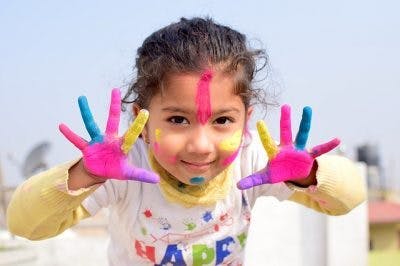
Creative activities like painting, draw, and sculpting are excellent for developing fine motor skills. Fine motor skills involve the use of smaller muscles, such as those in your hands, to perform tasks that require more accuracy and precision.
Art can also be a great way for children with cerebral palsy to express their feelings. Cerebral palsy can affect the muscles around the mouth, which can make it difficult for individuals to speak. Instead of verbally communicating, children with oral motor impairments may find it easier to draw how they feel.
2. Adaptive Sports
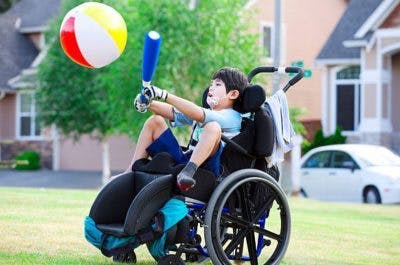
Participating in adaptive sports can be a great activity for kids with cerebral palsy.
Not only does it promote an active lifestyle, but it also teaches children teamwork, sportsmanship, and goal building.
Most sports can be adapted for individuals with motor impairments, so find out what sport your child is interested in and give it a try! To get started, check out the Paralympic Club directory.
Want 19 pages of CP recovery tips in PDF form? Click here to download our free illustrated ebook now (link opens a pop up for uninterrupted reading)
3. Board Games
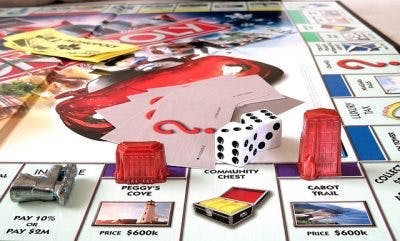
Board games are fun activities that encourage children to count, strategize, and take risks.
Along with developing cognitive skills, children with cerebral palsy can develop their fine motor skills by moving their player around, separating money, and picking up cards.
If you’re looking for a challenge, many board games have a “travel size” version that generally includes smaller components, requiring even more refined fine motor skills.
4. Karaoke
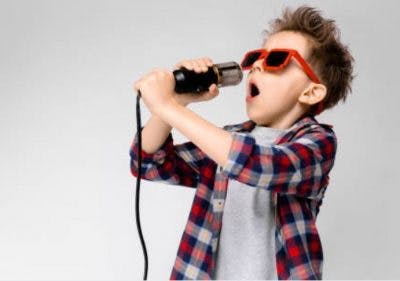
Kids with cerebral palsy that have speech impairments can benefit from singing.
Singing is processed by a different part of the brain than speech and with enough practice, it may help your child improve tone, articulation, and flow.
5. MusicGlove
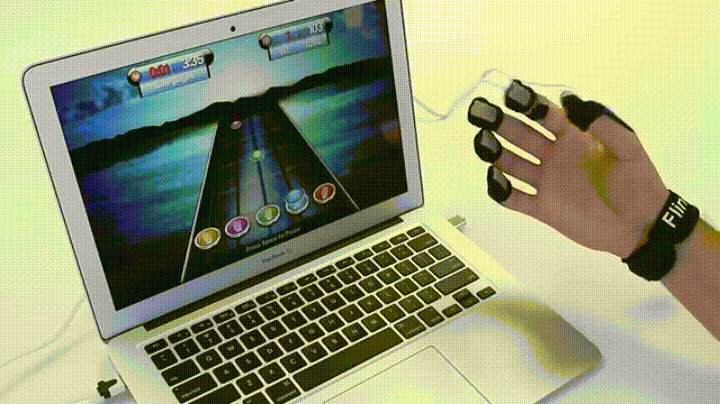
Flint Rehab’s MusicGlove is clinically proven to improve hand functions in just 2 weeks.
It’s a gamified hand therapy device that challenges user to make pinching motions along to music.
MusicGlove makes it easy for both kids and adults to practice the repetitions necessary to improve their hand functions.
6. Photography
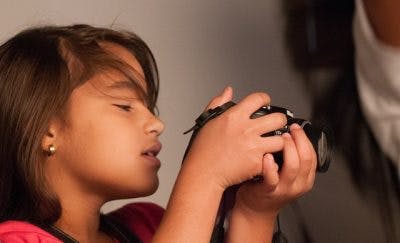
Photography is an activity that stimulates many different parts of the brain. It can help kids with cerebral palsy develop spatial awareness and express themselves nonverbally.
Additionally, pressing the buttons on a camera can help develop their fine motor skills.
7. Horseback Riding
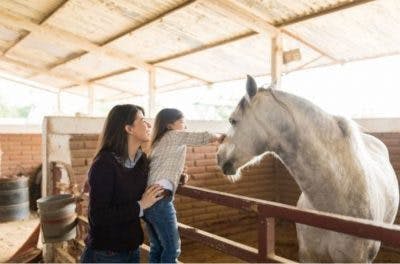
Horseback riding is one of the best activities for kids with cerebral palsy because it promotes:
- Balance
- Strength
- Posture
- Coordination
- Range of motion
Children constantly have to shift their center of gravity to stay on the horse.
In fact, there’s a whole therapeutic practice based on horseback riding called hippotherapy. It’s designed to help individuals with disabilities improve their motor skills. As an added benefit, interacting with horses can also improve a child’s emotional wellbeing.
8. Swimming
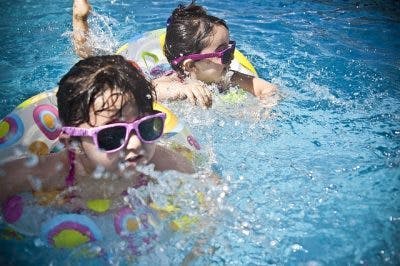
Getting into a pool is one of the best activities for kids with cerebral palsy because it lets them practice moving around with less pressure on the joints.
Water naturally has buoyancy, which is what keeps you afloat and makes you feel light. It helps you practice using correct form without bearing so much weight. This is especially great for children whose legs are affected by cerebral palsy, as it may give them an opportunity to move more freely than they are generally able to.
Ever noticed how difficult it is to move quickly in the water? That’s because water has viscosity (fluid resistance). It helps strengthen your muscles and minimizes the impact of a fall.
9. Swinging
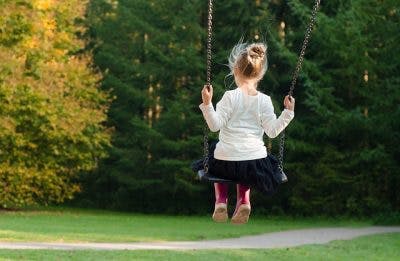
Take your child to a playground and go on the swings.
The only way to swing higher is to pump the legs with more power and build momentum, so it will encourage your child to move their legs more.
Swinging also requires a certain amount of grip and balance, so start slow and over time, these skills will develop.
10. Hula Hooping

Hula hooping is a great activity for kids with cerebral palsy who need to develop strength in their core.
Believe it or not, it also activates several areas of the brain. Hula hooping requires coordination, concentration, and rhythm. Once you get the hang of it, hula hooping can even be relaxing because your body goes into autopilot and performs the repetitions without much thought.
Swinging a hula hoop around an arm can also be good for children whose arms have been affected by cerebral palsy.
11. Dance Party

Throw a dance party and play songs that have corresponding hand motions or dance moves.
These movements are usually simple and repetitive, which is ideal for children trying to improve their motor functions. It will help your child anticipate, time, and coordinate their movements.
Some examples of songs with hand motions or dance moves include:
- Hokey Pokey
- Head, Shoulders, Knees, and Toes
- Hand Jive
- Cha Cha Slide
- Cupid Shuffle
- Macarena
You can create your own playlist or look them up on YouTube.
12. Hand-Clapping Games
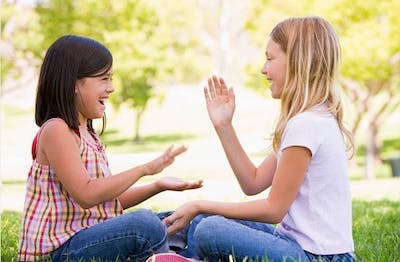
Hand-clapping games are great activities for promoting arm and hand functions. Most of these games have catchy and easy to learn songs that you sing while playing, which helps establish rhythm.
The corresponding hand motions usually involve repetitive:
- Bending and straightening of the elbows
- Accuracy to clap your partner’s hands
- Wrist range of motion
- Opening and closing of the hands
Some games will progressively increase in speed to make them more challenging and engaging.
Examples of hand-clapping games include:
13. Hot Lava
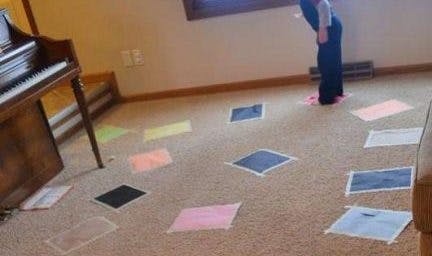
This next game requires you to tape sheets of paper to the floor. It works best on hard floor surfaces; however, if you have carpeted floors, you can play with felt sheets to avoid crinkling the paper.
The premise of the game is that you can only step on the sheets of paper and everything else is hot lava.
To make it more challenging, spread the pieces of paper further apart. To make it easier, create larger safe zones by grouping multiple pieces of paper together.
This game will help your child control where they place their steps and promote balance.
14. Darts
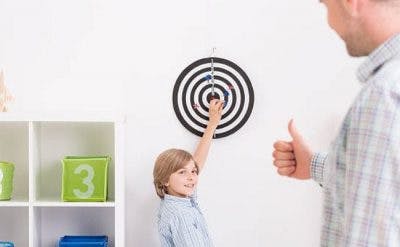
Playing with darts is a fun, challenging activity that can help kids with cerebral palsy practice:
- Gripping smaller objects
- Timing when to let go
- Aiming
- Bending and straightening their elbow
- Wrist movements
Look for child-friendly versions of darts that help make the game a little less dangerous (no sharp points, magnet-based, velcro ball-based, etc.).
15. Create a Secret Handshake

Creating a secret handshake with your child is a great way to get them excited to move. You can incorporate as many movements as you want. Touch the ground, spin in a circle, anything!
Having a secret handshake with your child will promote coordination and encourage your child to really think about their movements. Additionally, you can initiate it throughout the day to get them moving around.
Kids with Cerebral Palsy Are Not Limited to Certain Activities
Cerebral palsy shouldn’t stop your child from participating in the activities they love to do.
Forcing therapy may make kids feel like their cerebral palsy is a problem that needs to be fixed. By allowing children with cerebral palsy the freedom to participate in the activities that all the other kids are doing, they won’t feel so different and naturally develop new skills and abilities.
Experiment and see what activities your child gravitates towards. More likely than not, there’s a way to adjust the activity so that it is safe for your child.
Ultimately, the best activities for kids with cerebral palsy are the ones that they’ll continue to participate in. We hope you play these games with your child and see for yourself how engaging and effective they can be. Have fun!
Featured image: iStock/jarenwicklund

